If you are wondering, are guppies freshwater fish then you are in the right place.
In this article, I am going to answer the same question.
Keep reading.
Guppies are freshwater fish. They are found in the tropical habitat so they are tropical fish. Guppies are found throughout the world (except Antarctica). And they are one of the most popular aquarium fish.
Now let’s dive a little bit deeper into why guppies are called freshwater fish.
And what type of water do guppies need in an aquarium.
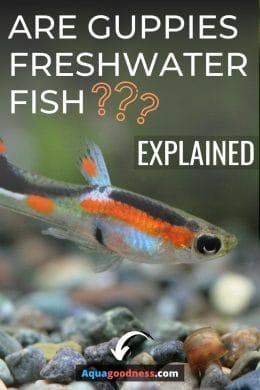
Table of Contents
Why are guppies freshwater fish?
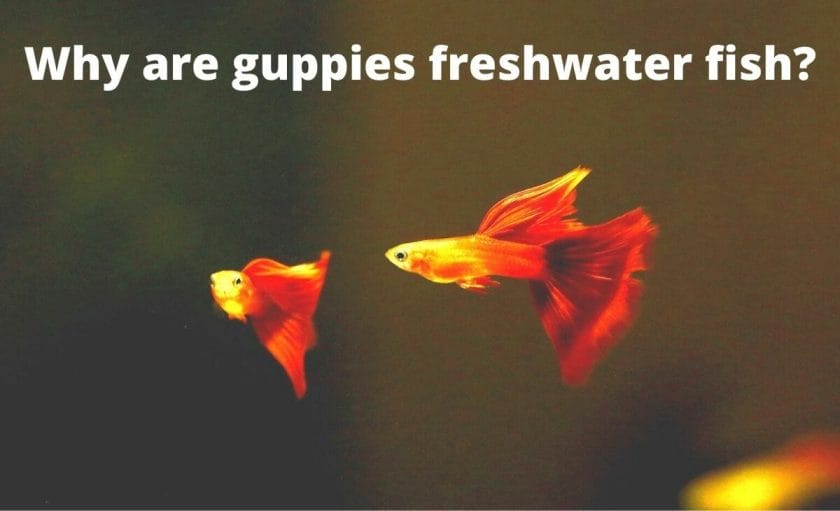
Guppies are freshwater fish because, naturally, they are found in freshwater.
They are usually found in smaller streams and pools and not in deep or large fast-flowing rivers.
Though guppies are mostly found in freshwater they are also found in some brackish water environments.
Guppies can even tolerate the salinity of saltwater!
In fact, many saltwater aquarium owners use guppies for fish-in cycling their fish tank.
As you can see guppies can tolerate a wide range of water parameters, this is one of the reasons they are found throughout the world.
They are found in almost all freshwater environments throughout the world!
What kind of water do guppies need in an aquarium?

Now that you know guppies are found in the freshwater environments in their natural habitat.
Let’s see what are the other water parameters you will need to maintain in your fish tank to keep guppies successfully in your fish tank.
1. Temperature between 72° to 78°F (22° C to 25° C)
Guppies are found in tropical environments in their natural habitat.
The temperature in the tropical environment is usually warmer i.e. above 64°F.
So, to create an ideal environment for the guppies in your fish tank, the temperature in your fish tank should be warmer, ideally between 72° to 78°F (22° C to 25° C).
Maintaining the ideal temperature is one of the 11 things you can do to keep your guppies happy and healthy.
Now guppies can tolerate temperatures less than 72°F and higher than 78°F.
But this can affect their growth rate.
For example, in the water temperature below 72°F guppies will grow slower and they will probably never reach adulthood.
On the other hand, if the water temperature in your fish tank is more than 78°F then the guppies will grow too fast and this can reduce their life span.
So, the water temperature between 72° to 78°F (22° C to 25° C) is a sweet spot. In this water temperature, guppies will grow properly i.e. they will reach adulthood and live longer.
You can easily keep track of the temperature in your fish tank using an aquarium water thermometer (link to Amazon).
To maintain the temperature within the ideal range you can use an aquarium water heater.
I recommend Cobalt Aquatics Flat Neo-Therm Heater (link to Amazon)
It has an adjustable thermostat so you can easily maintain the ideal temperature.
You can check out its reviews and latest price at Amazon here.
2. pH between 7 to 7.2
Guppies can tolerate a wide range of water PH.
They can tolerate pH as low as 5.5 to as high as 8.5.
But the ideal pH range for guppies is between 7 to 7.2.
You can easily check the pH of your aquarium water using an aquarium water test kit.
I recommend API FRESHWATER MASTER TEST KIT (link to Amazon).
It is a liquid-based test kit so it is pretty accurate.
Besides, it is a very popular test kit.
You can check out its reviews and latest price at Amazon here.
How to increase the pH in aquarium water
After testing your aquarium water if you noticed that the pH in your aquarium water is lower than 7 then you can use any of the methods mentioned below to increase the pH in your aquarium water.
1. Using baking soda
Using baking soda to increase the pH in aquarium water is a very common practice.
You will need to take about one tablespoon of baking soda for 5 gallons of your fish tank water to increase the pH.
For example, say you have a 10-gallon fish tank then you will need two tablespoons of baking soda to increase the pH.
Before adding the baking soda make sure to remove all the inhabitants i.e. your guppy fish and/or any other fish in your fish tank and put it put them in a separate tank.
Once you have added the baking soda then you should test your aquarium water using an aquarium water test kit.
Now if the pH is raised to 7 then you can add all the fish again to your fish tank.
2. Add crushed coral to your aquarium
You can also add crushed coral to your aquarium to increase the pH of your aquarium water.
You can mix crushed coral with your gravel or you can add the crushed coral in your filter.
Once you have added the crushed coral to your aquarium then it will dissolve in your fish tank over time.
If the pH of your aquarium water is too low then the crushed coral will dissolve faster in your aquarium water.
On the other hand, if the pH of your aquarium water is on the higher side then the crushed coral will dissolve slowly.
How to lower the pH of your aquarium water
After testing your aquarium water, if you found the pH of your aquarium water is more than 7.3 then you can use any of the following methods to lower the pH of your aquarium water.
- You can add natural driftwood to your fish tank to lower the pH of your aquarium water. Keep in mind if you have a large aquarium then you will need a lot of natural driftwood to lower the pH in your aquarium water.
- You can add peat moss in your aquarium filter to lower the pH of your aquarium water.
- An expensive option to lower the pH of your aquarium water is to use a reverse osmosis water purifier. The RO water purifier (link to Amazon) will also remove other impurities from the water like pesticides, heavy metals, and arsenic.
Oxygen
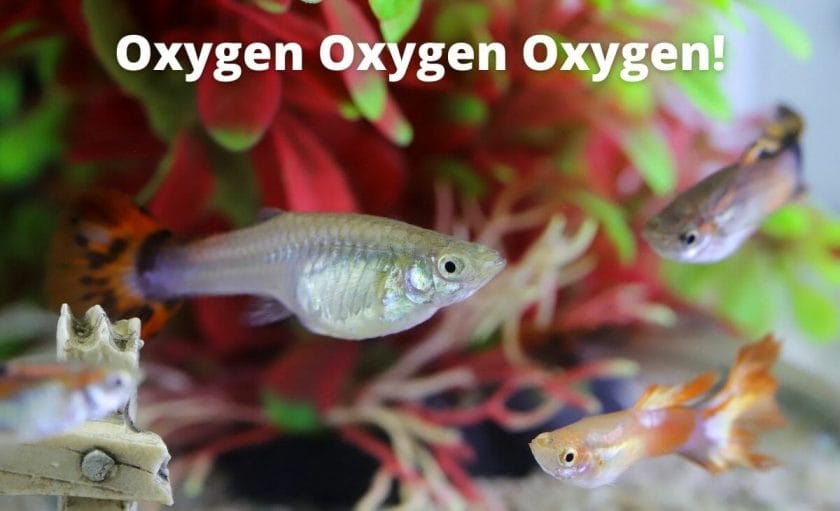
Guppies or any fish requires dissolved oxygen in a fish tank to survive.
There are several ways to increase and keep your fish tank oxygenated.
For example, you can add some live aquarium plants to your fish tank.
The live plants will release oxygen during the day.
Here are the best aquarium plants for guppies.
You can also add an air pump to your fish tank to make sure that your fish tank is always well oxygenated.
The air pump will create water agitation on the surface of the water of your fish tank which helps how to oxygenate the fish tank.
I recommend this Tetra Whisper air pump (link to Amazon).
It is from a reputed brand and it works quietly.
You can check out its reviews and latest price at Amazon here.
What are some other popular freshwater aquarium fish?
1. Harlequin Rasbora
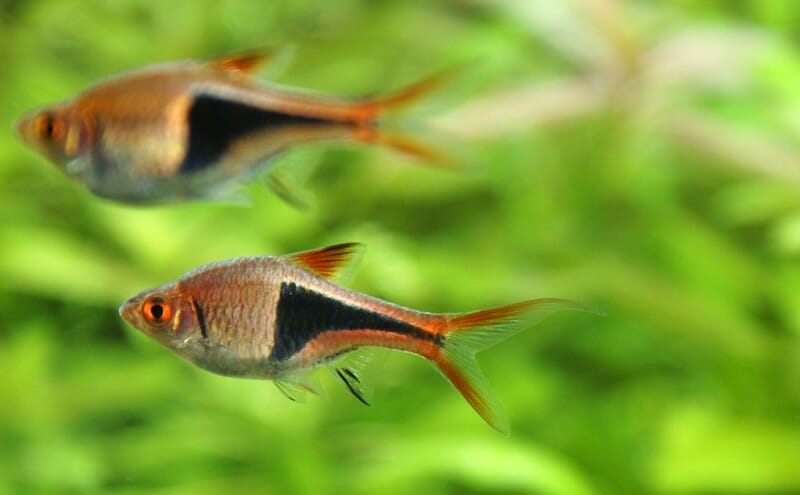
Image by Stefan Maurer under CC BY-SA 2.0
| PARAMETERS | VALUES |
|---|---|
| FISH | Harlequin Rasbora |
| SCIENTIFIC NAME | Trigonostigma heteromorpha |
| CARE LEVEL | Easy |
| MAXIMUM SIZE | 2 inches |
| AVERAGE LIFESPAN | 3 - 5 years |
| DIET | Omnivore |
| WATER TEMPERATURE | 72°F - 80° F |
| WATER pH | 5.5 - 7.0 |
| WATER HARDNESS | Up to 12° dH |
| BREEDING | Egg layer |
2. Neon Tetras
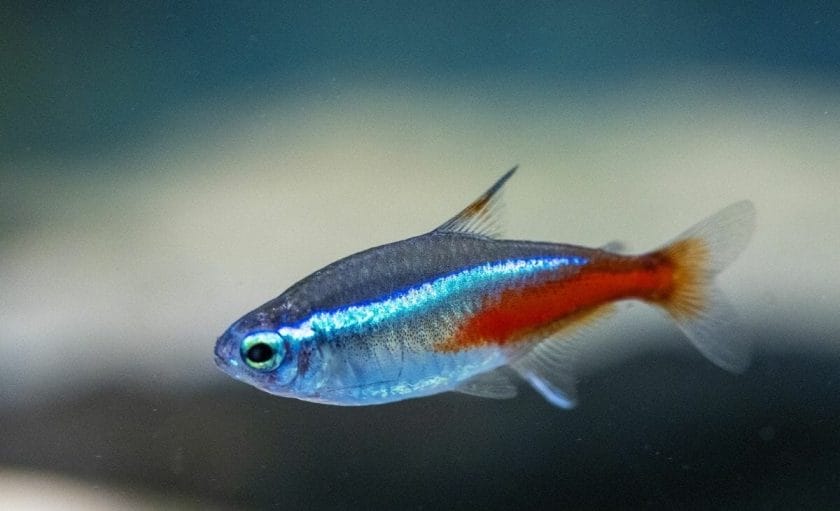
| PARAMETERS | VALUES |
|---|---|
| FISH | Neon tetra |
| SCIENTIFIC NAME | Paracheirodon innesi |
| CARE LEVEL | Intermediate |
| MAXIMUM SIZE | 1.5 inches |
| AVERAGE LIFESPAN | 5 years |
| DIET | Omnivore |
| WATER TEMPERATURE | 68 to 79 F |
| WATER pH | 7 |
| WATER HARDNESS | Up to 10 dGH |
| MINIMUM TANK CAPACITY | 10 gallon |
| BREEDING | Egg scatterer |
3. Bristlenose Pleco
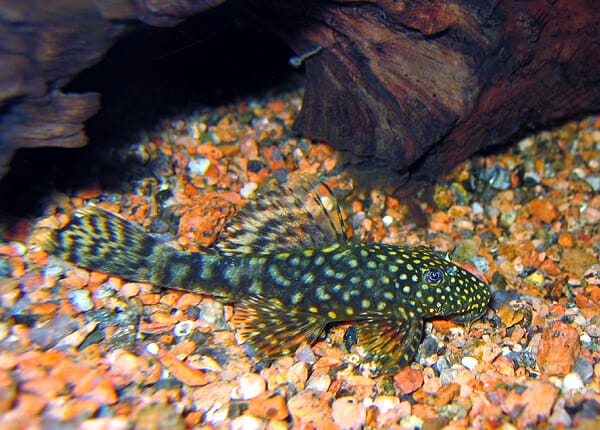
Image by Pia Helminen under CC BY-SA 3.0
| PARAMETERS | VALUES |
|---|---|
| FISH | Bristlenose Pleco |
| SCIENTIFIC NAME | Ancistrus Cirrhosus |
| CARE LEVEL | Easy |
| MAXIMUM SIZE | 5 inches |
| AVERAGE LIFESPAN | 5+ years |
| DIET | Herbivore |
| WATER TEMPERATURE | 73° - 81° F |
| WATER pH | 5.8 to 7.8 |
| WATER HARDNESS | 2° to 30° dH |
| BREEDING | Egg layer |
4. Swordtail Fish
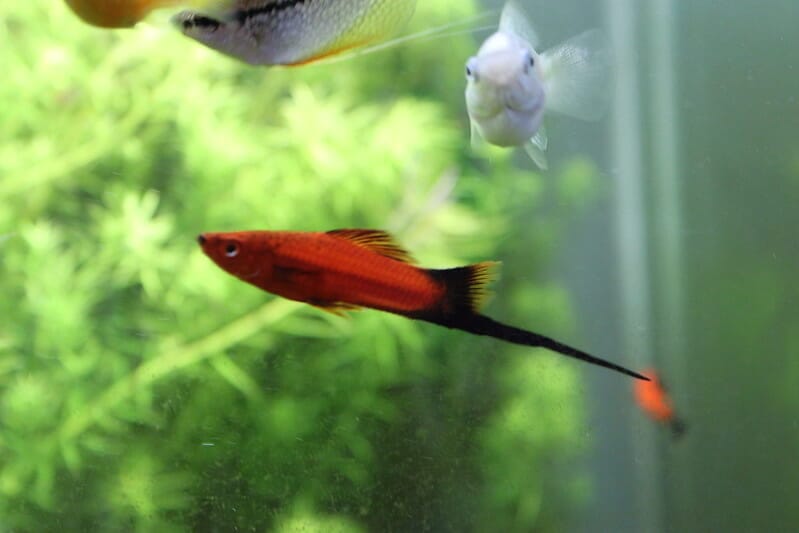
Image by Bernat Arlandis under CC BY-SA 2.0
| PARAMETERS | VALUES |
|---|---|
| FISH | Swordtail |
| SCIENTIFIC NAME | Xiphophorus helleri |
| CARE LEVEL | Easy |
| MAXIMUM SIZE | 5 inches |
| AVERAGE LIFESPAN | 3 - 5 years |
| DIET | Omnivores |
| WATER TEMPERATURE | 72°F - 82° F |
| WATER pH | 7 - 8 |
| WATER HARDNESS | 9° to 15° dH |
| MINIMUM TANK CAPACITY | 10 gallon |
| BREEDING | Livebearer |
5. Molly Fish
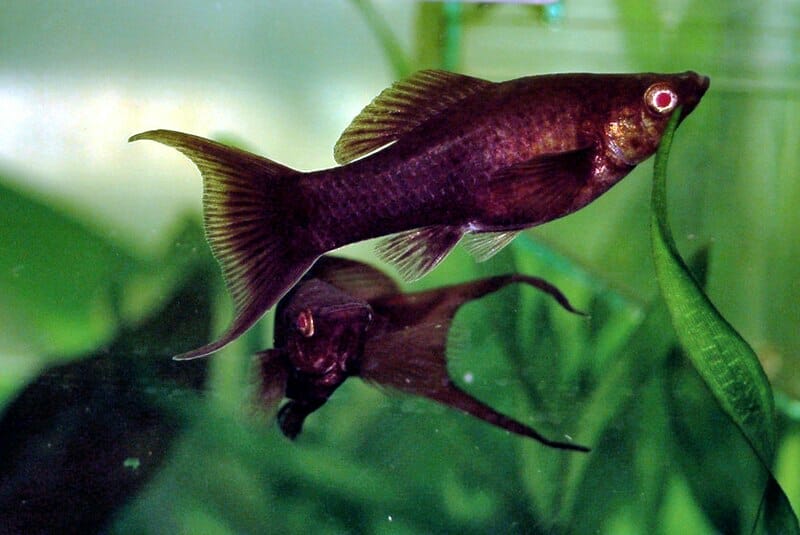
Black Molly by Marrabbio under CC BY-SA 3.0
| PARAMETERS | VALUES |
|---|---|
| FISH | Black Molly |
| SCIENTIFIC NAME | Poecilia sphenops |
| CARE LEVEL | Easy |
| MAXIMUM SIZE | 4 inches |
| AVERAGE LIFESPAN | 3 - 5 years |
| DIET | Omnivore |
| WATER TEMPERATURE | 70°F - 82°F |
| WATER pH | 7.5 - 8.5 |
| WATER HARDNESS | 10° to 25° dH |
| BREEDING | Live-bearers |
FAQ
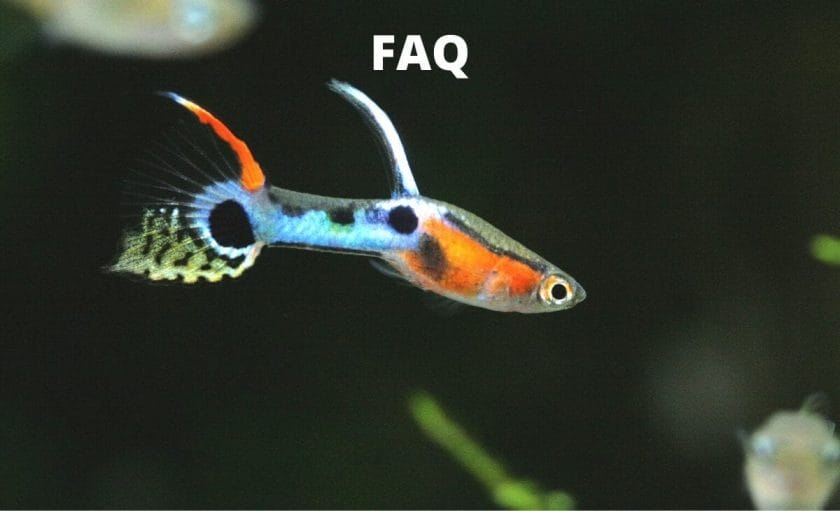
Are guppies freshwater or tropical?
Guppies are both freshwater and tropical fish.
In their natural habitat, guppies are mostly found in freshwater.
Besides, guppies are mostly found in tropical areas.
A tropical area is basically the area in which most of the year the temperature is warmer that is about 64°F (18° C).
So overall, guppies are freshwater tropical fish!
Can guppies live in saltwater?
Guppies can be acclimated to saltwater.
Many saltwater tank owners use guppies to cycle their saltwater tanks.
Can guppies live in brackish water?
Guppies can live in brackish water.
Guppies are found in some natural brackish water habitats.
Brackish water has more salinity than freshwater but less than seawater.
And guppies can tolerate high salinity.
Conclusion
Overall guppies are freshwater fish.
Guppies are found in tropical habitats so they are also tropical fish.
You can keep guppies in your freshwater aquarium.
As guppies are tropical fish, you should try to emulate the tropical environment in your fish tank for guppies.
I hope you found this article helpful.
If you do, please share it.
Happy fishkeeping!